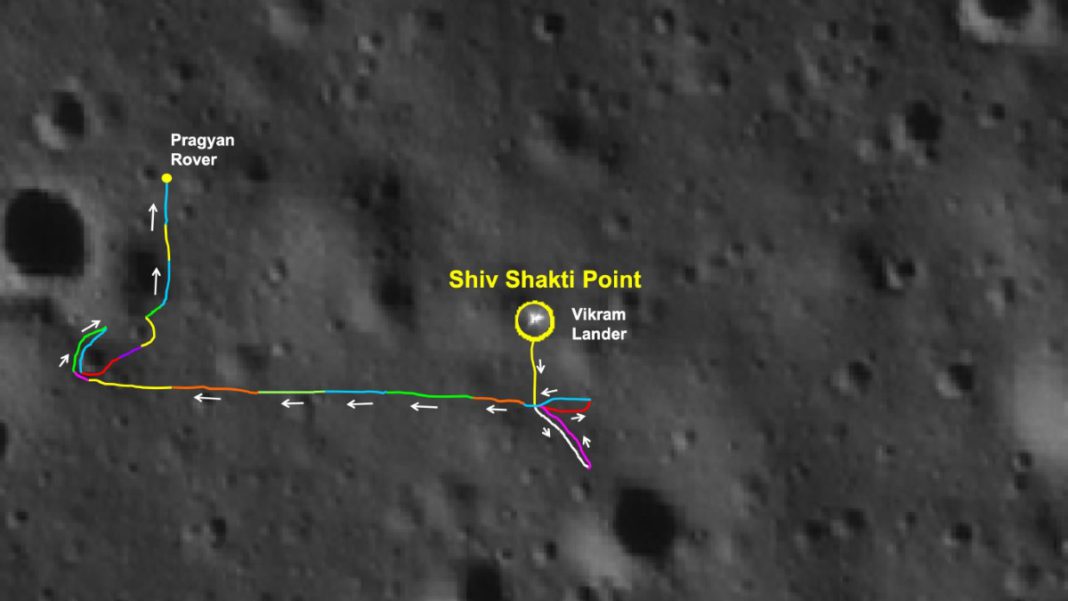INDIA: On August 23, 2023, India achieved a historic milestone by successfully soft-landing Chandrayaan-3 on the moon, becoming only the fourth nation in the world to accomplish this incredible feat. Millions of people worldwide watched in awe as the Indian Space Research Organisation (ISRO) executed this groundbreaking mission, marking a significant leap in lunar exploration.
Chandrayaan-3’s landing was witnessed not only by Earthbound spectators but also by its predecessor, Chandrayaan-2, which captured striking images of the lunar surface during the touchdown. Among the remarkable discoveries from these images was the revelation of an “ejecta halo,” a vast ring-shaped plume of moon dust created by Chandrayaan-3’s landing thrusters.
Scientists, in a new study published in the Journal of the Indian Society of Remote Sensing, estimate that the landing displaced approximately 2.06 metric tonnes (4,500 pounds) of lunar regolith, spreading it across an area of 1,167 square feet (108.4 square meters). This phenomenon was identified through variations in reflectivity in the freshly disturbed top layers of moon dust.
The loss of cohesion in the epi regolith (top layer of lunar soil) due to the landing led to increased photometric scattering and the formation of the distinctive reflectance anomaly known as the ejecta halo.
Chandrayaan-2, launched in 2019, had aimed to achieve a similar mission to land in the lunar south polar region but lost contact with its lander just above the moon’s surface. Despite this setback, Chandrayaan-2’s orbiter continued to operate, capturing high-resolution images and mapping lunar terrain.
Chandrayaan-3, nearly four years later, embarked on the same mission to land a rover in the lunar south polar region, achieving success where its predecessor had faltered.
With India’s achievement, only three other countries—the United States, the Soviet Union, and China—have accomplished soft landings on the moon. This significant milestone opens the door to further lunar exploration, with NASA’s Artemis program and other nations preparing for their moon missions shortly.
India’s Chandrayaan-3 mission has not only made history but has also expanded our understanding of lunar geology with the discovery of the remarkable ejecta halo, a testament to the nation’s growing prominence in space exploration.
Also Read: Foreign Residents Leaving Gaza as Israeli Airstrikes Continue, Causing Casualties



